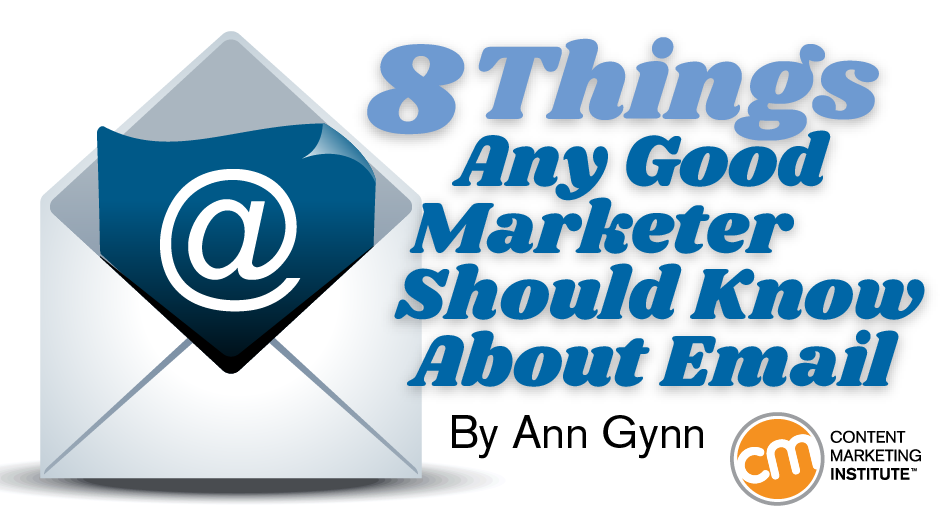That was the wisdom from Mathew Sweezey, principal of marketing insights at Salesforce and author of Marketing Automation for Dummies, in his Content Marketing World 2016 presentation, How to Improve the Value of Your Email Through Marketing Automation. His tips on how to leverage email in today’s world for better content marketing range from subject lines to email “plays” and why it’s more important than ever to obtain people’s email addresses. As such, you should use that email real estate differently depending on the recipient’s stage in the buying process. The prospective student then was only a click away from learning more personally about and connecting with an MIT professor. It’s to be effective,” Mathew says. So how do you do that in an email? Email stage two relevant content. Email stage one relevant content. Now how can a big B2B company use Facebook to make those sales? It’s about using that email address to deliver more relevant content when the recipient wants it.

Email is the most valuable tool for any content marketer – and our research proves it. 93% of B2B marketers use email to distribute content, and of those, 91% consider email to be critical.
Email can do so much to help you build better relationships with your audience, understand individuals’ behaviors, and even maximize the reach of your paid social content.
That was the wisdom from Mathew Sweezey, principal of marketing insights at Salesforce and author of Marketing Automation for Dummies, in his Content Marketing World 2016 presentation, How to Improve the Value of Your Email Through Marketing Automation.
His tips on how to leverage email in today’s world for better content marketing range from subject lines to email “plays” and why it’s more important than ever to obtain people’s email addresses.
Customize first impression by buyer’s stage
Think about how you peruse your inbox in the morning. Do you open the first email, decide if it’s good content, and move on to the next? Or do you delete all the worthless emails and read what remains?
Chances are it’s the latter. That’s why your subject line and sender “are the only pieces of information to determine if email is credible,” Mathew says.
As such, you should use that email real estate differently depending on the recipient’s stage in the buying process. Here are the guidelines by stage:
- Stage one: This audience is asking generic questions. They may not even know the keywords in that space. If they see a vendor’s name in the prime email real estate, they know the email is from a marketer. In the prime email real estate, don’t include keywords or brand names.
- Stage two: This audience is looking for social proof to support their research. Use the subject line to give them ammunition to get support from others. In the prime email real estate, use a keyword or brand name, but not both.
- Stage three: This audience wants to know they have researched all their options before they make a decision. In the prime real estate, use a keyword and brand name.
Quickly create emails
One-third of marketers take seven weeks to create a piece of content; 42% take two to five weeks.
You can’t craft emails the same way. Identify brief content already created that can be shared through email.
Mathew shares what he learned working with MIT’s Sloan School of Management to identify the behavior of people signing up for MBA programs. The research showed that MBA candidates evaluating which schools to apply to value things outside of the actual degree, such as the connection with professors.
MIT now knew that promoting their professors as individuals could make a difference. In their email marketing, they linked to the professors’ LinkedIn profiles. The prospective student then was only a click away from learning more personally about and connecting with an MIT professor. (And MIT could track their behavior by tracking the LinkedIn URL.)
Mathew offers a generic visual example based on second stage of the buying process. If someone is seeking social proof in their research for a product or service, a simple email including a link to content from a third party talking about your product, service, or related proof-type research could work, such as this:

Don’t send the prettiest email
While the example above demonstrates the ability to quickly create an email with value, it also exemplifies the real value in communicating the same way a person would email a friend or colleague. It’s authentic and personal.
“Our job is not to be pretty. It’s to be effective,” Mathew says. He explains that HTML-pretty emails are holdovers from the world of direct mail – they aren’t a marker of legitimacy but a marker of marketing.
Rich text is how humans write emails.
A large U.S. bank that Mathew works with tested the difference between HTML and rich text. It sent the same email using the two formats. Engagement, as measured in open rates, was four times greater for…

COMMENTS